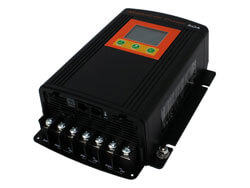kingsling
New Member
- Joined
- Feb 3, 2022
- Messages
- 14
In the product manual for the charger it states that "Solar charging will be triggered if the PV input voltage is higher than 15V for 10 seconds."
Does this infer that : if you have two identical solar panels wired in parallel, with a VMP of 18.5 volts for each panel, and if it was a cloudy day or you were in a shady area and the VMP was reduced to 14 volts, you would get no charge to the battery from your panels at all?
Does this infer that : if you have two identical solar panels wired in parallel, with a VMP of 18.5 volts for each panel, and if it was a cloudy day or you were in a shady area and the VMP was reduced to 14 volts, you would get no charge to the battery from your panels at all?
Last edited:



